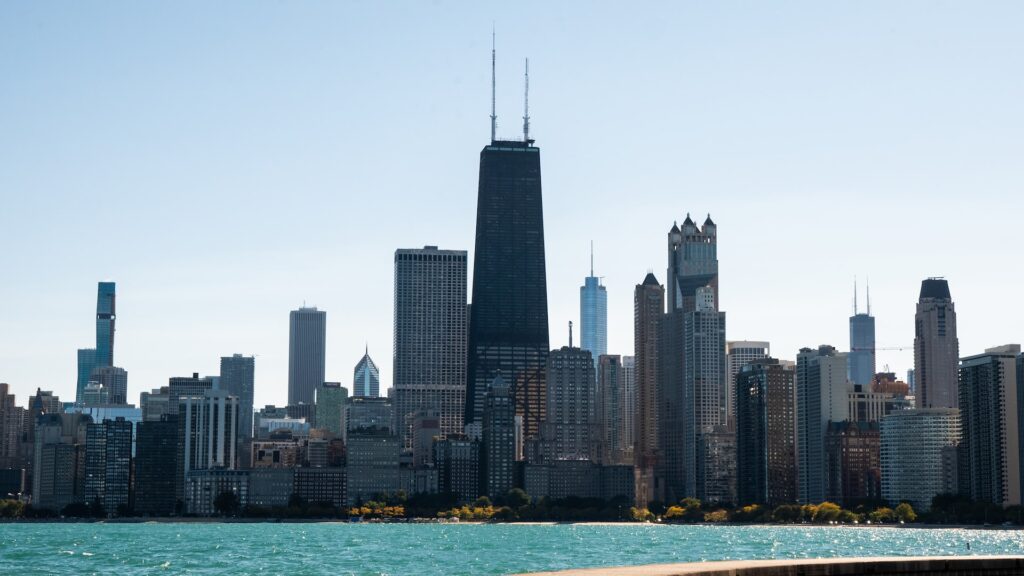Spires have always been up there with the tallest buildings. Looking back from the Gothic cathedrals of the mid-12th century to the many skyscrapers scattered all over the world, spires have always been a part of tall buildings. And with every spire built atop a tall building comes a reason for its presence.
This article will focus on the reasons why spires are used in building skyscrapers. Some of the most common reasons for this will be listed and some of the most frequently asked questions will be stated and answered towards the end of this article so do sit back and enjoy, and learn too.
Why Do Skyscrapers Have Spires?
In the urban cities in the world, one hardly sees a skyscraper without a tapering conical structure standing atop its roof–a spire–and even in countries like the United Kingdom known for its rich medieval history are castles of the Middle Ages with their roofs bearing the same structure as the modern skyscrapers.
This shows that the use of these structures on the roof of tall buildings is an age-long practice. We will now look into the reasons why these are a common part of skyscrapers the world over.
1. Increase in height
Adding a spire is a cheap way to increase the height of a building. Agreed, the cost of building a skyscraper is expensive and why not, it is the category with the tallest buildings and it takes a lot of money to procure the materials to build it so adding a spire is a fine way to increase the height of the skyscraper without spending as much as you would have if you bought materials for that extra story of the skyscraper.
Interestingly, an event happened in 2017 that further strengthens the usefulness of spires in increasing the height of skyscrapers. Before that year, the US Bank Tower has acclaimed as the tallest building in all of Western America but because the Wilshire Grand Center added a spire to its roof which gave it a bit more height than the US Bank Tower, the Bank Tower lost its position as the tallest building in that part of the world to the Grand Center. What a difference that spire made.
2. Protection Against Lightning Strikes
The spire can serve as a lightning rod. How? Let me help with that. Being the tallest part of the skyscraper, it is the closest to the clouds so on a stormy night.
When the lightning strikers are all over the place and descend on a skyscraper, instead of striking the building directly and harming every plugged appliance and everybody in it, it strikes the spire which acts as a protective shield against the strike.
Now, when the lightning strikes the spire, the structure reduces the damaging effect the lightning strike would have had on the building if it had struck the skyscraper directly. This is a reason why church buildings of the Middle Ages had spires atop their roofs.
3. Aesthetic Purpose
Vitruvius stated in his book that a building must be solid, useful, beautiful, aesthetics is seen as an important part of a building, without which such a building would be seen as incomplete. Human beings are drawn to attractive things and that includes buildings.
In cases where a building is seen as unattractive to people, it would be rarely visited by the populace, hence defeating in one way or another the use of the building.
How do spires make a skyscraper look good? Well, spires tend to take the focus off the ugly–if I can say that–shape of a skyscraper’s roof.
Instead of people taking note of how unpleasant the skyscraper’s roof looks to the eyes, they are instead focused on the aesthetics of the spire atop the skyscraper thus averting danger for the building’s owner.
4. Signal Transmission
Another reason for the use of spires on skyscrapers is that they serve as signal transmission poles because they can have antennas attached to them for such purpose. Major news broadcast media make use of spires on their skyscrapers to connect to satellites orbiting around the Earth for the purpose of transmitting broadcast signals and spreading the news via electronic means.
FAQs
Why do architects add spires to skyscrapers?
Spires are known to have many functions with regard to skyscrapers ranging from aesthetics to height increase so architects add them depending on what their employer wants.
Why do spires count for the height of the buildings they are on?
This is simply because they(spires) are part of the architectural design of the buildings they stand on. Because they are part of the buildings’ blueprints, they are considered when measuring buildings’ heights. This is why objects like antennas are not considered as part of a building’s height because antennas are not part of the architectural design of such a building.
Why are spires on top of skyscrapers?
Spires are seen as superstructures and that means that they are meant to be on top of structures. Super meaning on top and structure meaning what it means. Because of the reasons for a spire on skyscrapers, they have to be on top of such buildings.
Take the ‘protection against lightning strike’ reason given above, for instance, lightning strikes in a linear pattern from above down and not say, sideways, so a spire has to be at the highest point of a building to receive the lightning strike when it comes streaking down.
Final Thoughts
With all the reasons given above and many more not mentioned here, the use of spires on skyscrapers doesn’t seem like a bad idea, and the fact that it has multipurpose functions make it more attractive to people looking to build skyscrapers so you can strongly consider one while planning yours. It won’t be a bad idea at all.

